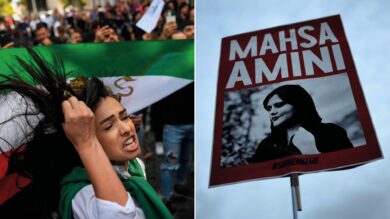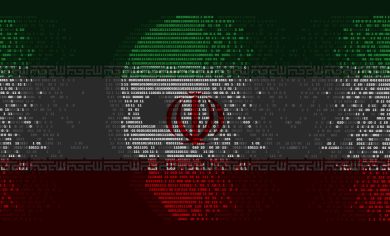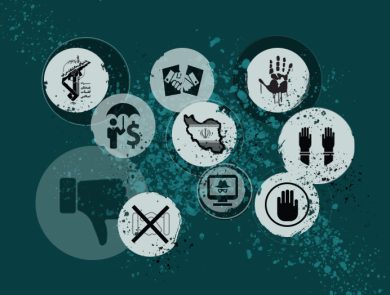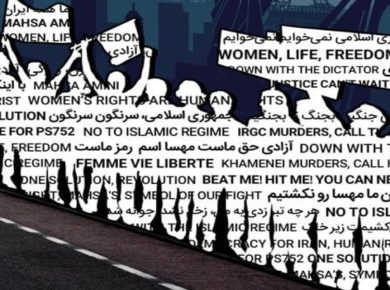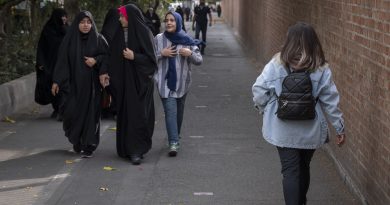The Islamic Revolutionary Guard Corps (IRGC) has built a regime of fear—one that tortures protesters, censors artists, jails journalists, and assassinates dissidents abroad. Yet despite the brutality, there is another story—one of resistance. A growing wave of Iranians and diaspora voices are standing up to the IRGC, often at enormous personal risk.
This article honors the faces of resistance—activists, artists, students, and ordinary citizens whose courage exposes the crimes of the IRGC and inspires a global movement for justice. These are their stories.
1. Narges Mohammadi: The Voice Behind Bars
Narges Mohammadi is one of Iran’s most fearless human rights defenders. A journalist and vice president of the Defenders of Human Rights Center in Tehran, she has spent most of the past decade in prison for speaking out against the IRGC’s use of torture, executions, and solitary confinement.
Why the IRGC Fears Her:
• Publicly exposed human rights violations in IRGC-run prisons
• Advocated for women political prisoners and abolition of the death penalty
• Awarded the 2023 Nobel Peace Prize while in detention
Despite repeated arrests, harassment, and health crises, Mohammadi continues to write from prison. Her resistance embodies the IRGC’s greatest fear: an unbroken will.
2. Toomaj Salehi: The Rapper Who Spoke Truth to Power
Toomaj Salehi is a 33-year-old Iranian rapper who became the voice of a generation. His lyrics directly call out the IRGC’s violence, corruption, and repression. For that, he has been arrested multiple times and tortured in prison.
Why the IRGC Targeted Him:
• Songs like “Mouse Hole” and “Survivor” criticized the Supreme Leader and IRGC elites
• Encouraged youth to join protests during the 2022 uprising
• Became a cultural symbol of defiance
In 2023, Toomaj was sentenced to death by an IRGC-controlled court, sparking international outrage. His case is a rallying cry for artists, activists, and exiles alike.
3. Masih Alinejad: The Woman Who Took the Fight Global
Exiled journalist Masih Alinejad is one of the most influential Iranian voices on the global stage. Founder of the White Wednesdays campaign against compulsory hijab, she has been the target of multiple IRGC-led assassination and kidnapping plots—even on U.S. soil.
Her Acts of Resistance:
• Mobilized millions of Iranian women through digital activism
• Gave voice to victims of IRGC violence on international platforms
• Survived and exposed IRGC attempts to silence her abroad
Masih’s resistance is ongoing. Her message is simple: “The Islamic Republic fears women more than bombs.”
4. Sepideh Gholian: The Labor Activist Who Wouldn’t Stay Silent
Sepideh Gholian is a labor rights activist arrested in 2018 for covering workers’ protests in Khuzestan. During her detention in an IRGC facility, she was tortured, assaulted, and forced to confess on national television.
What Makes Her Defiant:
• Smuggled letters and videos from prison detailing abuse
• Continued protesting upon every release—even shouting anti-Khamenei slogans outside Evin Prison
• Became a symbol of resistance among students and working-class Iranians
Gholian’s resilience shows how courage can echo even from behind bars.
5. Navid Afkari: The Athlete They Tried to Erase
In 2020, Navid Afkari, a 27-year-old wrestling champion, was executed by the IRGC for participating in protests. His televised confession was coerced under torture. His trial lacked evidence. His execution was a warning.
Why He Matters:
• Became a national hero in death
• Sparked international outrage from athletes, activists, and human rights groups
• His brothers, Vahid and Habib, remain in prison under IRGC control
Navid’s name is now chanted at protests, written on walls, and remembered as a martyr of resistance.
6. Atena Daemi: The Prisoner of Conscience
Atena Daemi, a children’s rights advocate, has been jailed repeatedly for peaceful activism, including posts criticizing the IRGC’s executions and military parades involving children.
Her Forms of Resistance:
• Hunger strikes inside prison
• Refused to attend IRGC-run court proceedings
• Defended fellow prisoners facing abuse
Despite being released briefly in 2021, she continues to face harassment and surveillance. Her case highlights how even non-violent activism is criminalized by the IRGC.
7. Hossein Ronaghi: The Tech Activist Who Survived Torture
Hossein Ronaghi is a blogger and freedom-of-information advocate who’s been imprisoned, beaten, and had both legs broken under IRGC custody. He was arrested during the 2022 uprising and denied medical care for weeks.
What He Represents:
• The voice of Iran’s cyber resistance
• Courageous documentation of repression from inside prison
• A rallying figure for digital freedom activists
Despite permanent injuries, Ronaghi’s spirit remains unbroken—and he continues to expose the IRGC’s brutality through any means available.
8. The Women of Zahedan and Sanandaj: Anonymous, Brave, and Relentless
In cities like Zahedan (Baluchestan) and Sanandaj (Kurdistan), women have led protests under the shadow of military occupation. IRGC snipers have killed dozens of girls and women in these regions, but the resistance continues—largely undocumented and often anonymous.
Why Their Resistance Matters:
• Protested weekly after Friday prayers despite killings
• Protected injured demonstrators from arrest
• Carried photos of the dead into the streets
They show that resistance is not just led by celebrities—it’s sustained by everyday courage in the face of guns.
9. The Mothers of the Executed: Iran’s Mothers of Resistance
Known as the “Khanevadeh-ye Dard” (Families of Pain), these mothers lost sons and daughters to IRGC bullets, gallows, or torture. Instead of grieving quietly, they have become public advocates for justice.
Notable Figures:
• Gohar Eshghi, mother of blogger Sattar Beheshti (tortured to death in 2012)
• Mothers of Khavaran, who demand justice for 1988 massacre victims
• Mothers of Aban, commemorating November 2019’s slain protesters
Their voices pierce the IRGC’s propaganda with raw truth—and they will not be silenced.
10. Students and Schoolgirls: The New Generation of Fearless Resistance
In 2022 and 2023, Iranian schoolgirls tore down portraits of Khamenei, chanted slogans in classrooms, and organized flash protests against the IRGC’s repression.
Highlights:
• Viral videos of unveiled students shouting “Death to the dictator”
• Defiant school walkouts and secret organizing
• Facing detention, expulsion, and threats—but refusing to back down
These youth are the future. Their resistance is digital, decentralized, and deeply rooted in a desire for freedom.
What Unites Them All
Across age, region, profession, and gender, these faces of resistance share common traits:
• Moral clarity in the face of brutality
• Fearlessness, often at the cost of personal freedom or life
• Solidarity, with each other and with the people of Iran
• Unyielding hope that justice will one day prevail
The IRGC has the weapons. But these individuals have something stronger: the truth—and a world increasingly willing to listen.
How You Can Honor Their Resistance
• Share their stories: Use your platform to amplify their courage.
• Support advocacy: Donate or volunteer with groups documenting human rights abuses.
• Demand accountability: Call for IRGC terrorist designation and international justice.
• Stand in solidarity: Attend rallies, sign petitions, and write to lawmakers.
• Protect the vulnerable: Help create safe platforms for dissidents and survivors to speak.
Conclusion: The Resistance Lives
The IRGC rules with fear. But fear is not stronger than courage.
These faces of resistance are not just victims. They are leaders. They are the conscience of a nation in chains. They remind us that every act of defiance matters—and that no regime, no matter how brutal, can survive the force of human dignity forever.
Join Our Newsletter!
Stay informed with the latest updates, news, and ways to take action in the fight for justice and global security. Sign up now to get updates delivered straight to your inbox!

